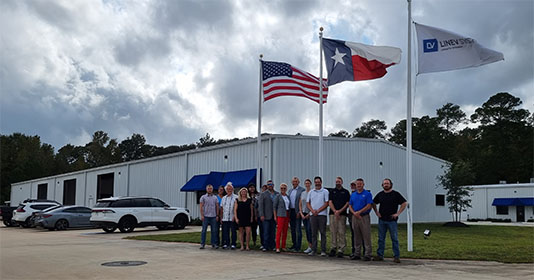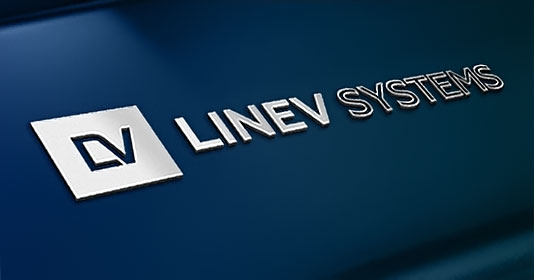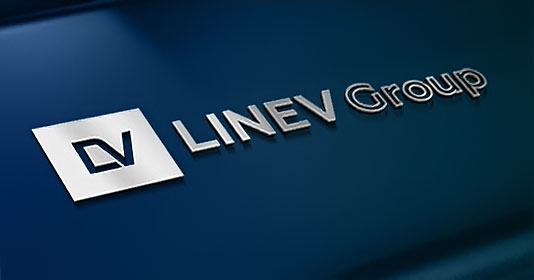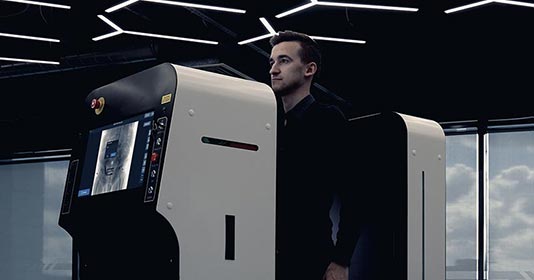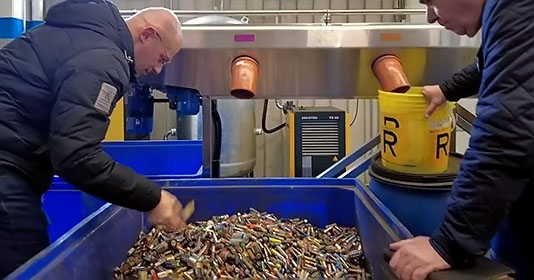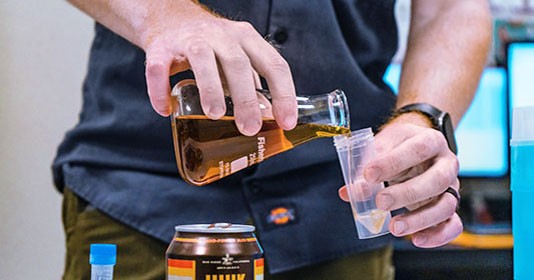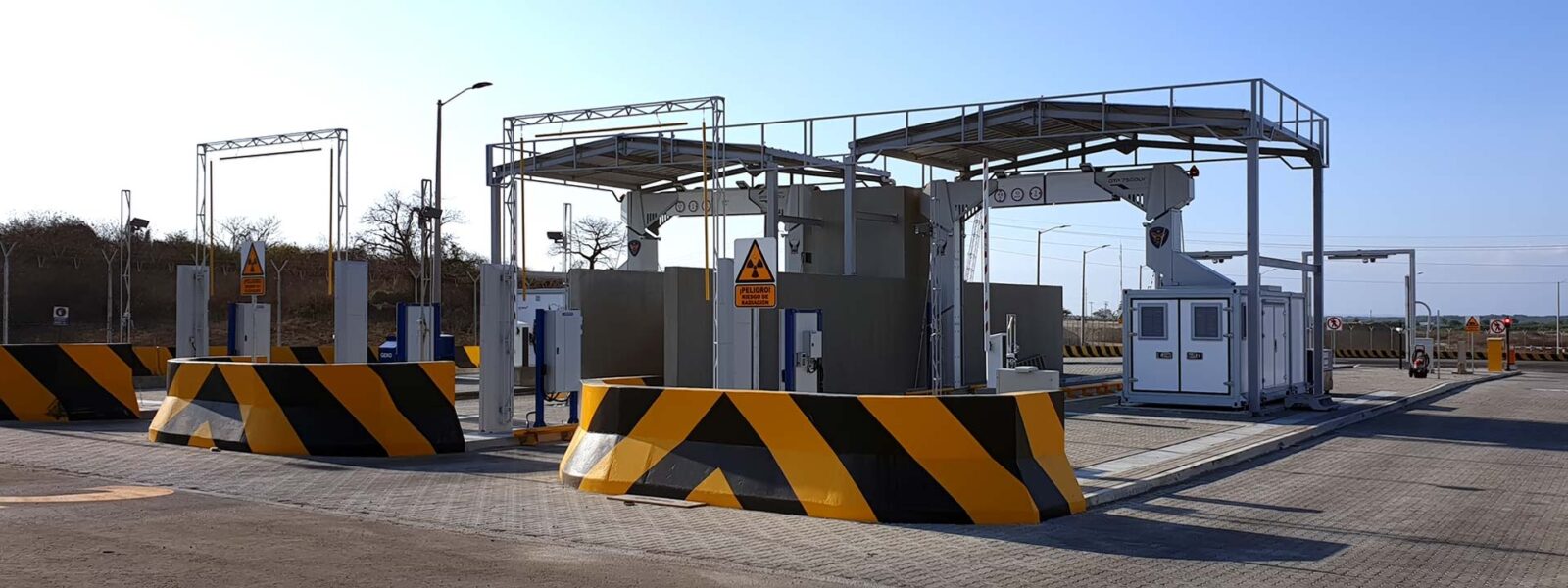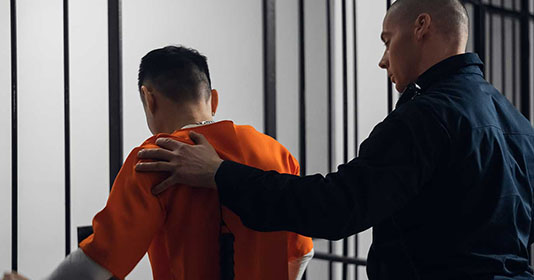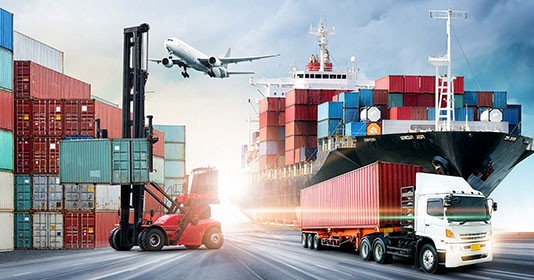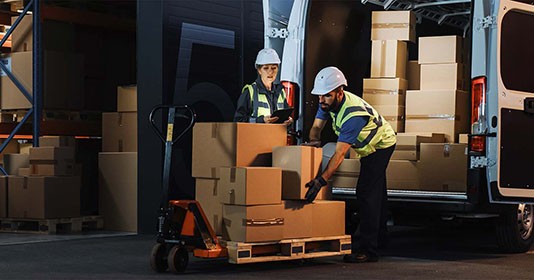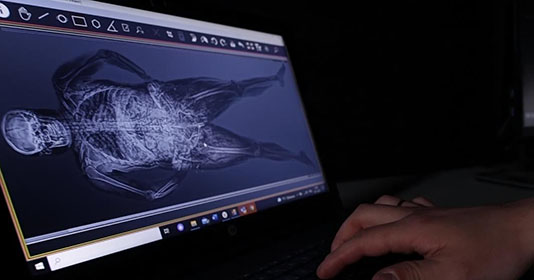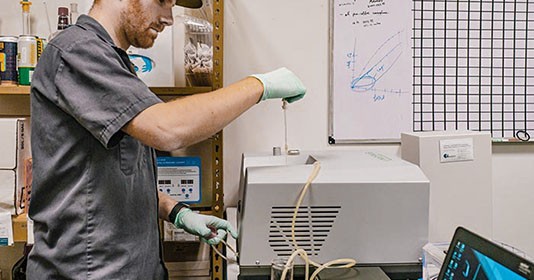
Group website:
Other company websites:
Choose website
Ensuring Privacy and Compliance in Government Building Security


Ensuring Privacy and Compliance in Government Building Security
Government buildings face the challenging task of ensuring the safety of occupants while respecting individual privacy rights and adhering to stringent regulations. This delicate balance between security measures and privacy concerns is crucial in maintaining public trust and upholding legal compliance. X-ray technology solutions for security for government buildings are pivotal in achieving this.
Government buildings face the challenging task of ensuring the safety of occupants while respecting individual privacy rights and adhering to stringent regulations. This delicate balance between security measures and privacy concerns is crucial in maintaining public trust and upholding legal compliance. X-ray technology solutions for security for government buildings are pivotal in achieving this. Government buildings, serving as hubs for critical operations and housing sensitive information, require sophisticated security systems. Traditional security measures, such as portal metal detectors, have been augmented by advanced technologies like X-ray scanners and explosive detectors to provide a comprehensive security apparatus.
Detection systems, including portal (walk-through) metal detectors, provide a crucial second layer of security at entry control points. These strategically placed detectors screen individuals for hidden firearms, knives, and explosive devices as they navigate the access control system. Recent technological advancements have equipped portal scanners with light bars that highlight areas of the body with the highest metal concentrations, enhancing precision and efficiency. Handheld detector wands, now more sensitive and ergonomic, serve as an effective follow-up screening tool. As individuals pass through metal detectors, their belongings undergo further scrutiny using X-ray systems. This two-tiered approach ensures a thorough examination, contributing to a robust security infrastructure.
Security standards and prevention protocols play a crucial role in safeguarding citizens from various threats and hazards. Several agencies, including FEMA (Federal Emergency Management Agency), ICE (U.S. Immigration and Customs Enforcement), TSA (Transportation Security Administration), CWMD (Countering Weapons of Mass Destruction), and OSA (Office of Security Affairs), are instrumental in establishing and enforcing these measures to ensure the safety and security of the public. These measures are essential for protecting citizens, infrastructure, and national interests from a wide range of threats, whether they are natural disasters, illegal activities, transportation-related risks, or the potential use of weapons of mass destruction. The collaborative efforts of these agencies contribute to the overall security and resilience of the institute. X-ray scanners, a cornerstone of modern security systems, utilize electromagnetic waves (x-rays) to expose distinct structures within individuals or objects. By leveraging the differing material compositions of items, such as metal knives, plastic weapons, and explosive substances, these scanners create detailed images for human operators to analyze.
LINEV Systems offers comprehensive security solutions. By fusing cutting-edge technology with client demands, LINEV Systems ensures that solutions and services react to changes in the worldwide market. LINEV Systems is part of LINEV® Group, a unique platform supporting innovation that enables its employees worldwide to use unlimited resources, processes, and technologies to create innovative high-tech solutions quickly to exceed customer expectations.
Adherence to regulations is non-negotiable in government building security. Regulations vary, but they often focus on minimizing invasive procedures, protecting individual privacy, and ensuring the responsible use of advanced technologies. Government agencies must stay informed about and compliant with evolving regulations to uphold the highest standards of security and privacy.
LINEV Systems stands at the forefront of providing state-of-the-art security solutions, offering a range of advanced systems designed to enhance safety and threat detection across various sectors. Two notable contributions that can be used for security at government buildings are the BV 6045 and DTP 7500/320DV, each addressing specific security needs with precision and efficiency.
The BV 6045 is a high-resolution, single-view X-ray baggage inspection system that sets a new standard for automatically detecting prohibited objects and threats. With a tunnel width of 610 mm and a height of 450 mm, it is optimally designed for inspecting baggage, bags, hand luggage, and parcels. The system’s applications extend to critical infrastructure facilities, law enforcement and security agencies, customs, border guards, hotels, event centers, educational institutions, sports arenas, and other locations where reliable and uninterrupted operation of inspection systems is paramount. This cutting-edge system enables the identification of weapons, explosives, drugs, and any other dangerous or prohibited items. Unique colour palettes and touch controls enhance operator efficiency, providing an exceptional level of detail in X-ray images. The BV 6045 also offers advanced features such as TIP software for monitoring operator vigilance, secure login, multi-level user access, automatic warming up of the X-ray generator, and a convenient baggage counter, ensuring a comprehensive and user-friendly security solution.
LINEV Systems introduces the DTP 7500/320DV, a multi-view/dual-energy solution that revolutionizes vehicle inspection for enhanced contraband detection. This system’s unique multiple projection and energy technology allows the safe inspection of vehicles, from passenger cars and vans to buses and loaded trucks, simultaneously. It is a highly effective tool for detecting a wide range of contrabands, from low-density small objects to heavy objects with 320 mm steel equivalent.
Designed for various applications, the DTP 7500/320DV ensures safe and rapid screening of multi-sized vehicles when specialized solutions are not applicable or practical. The system’s dual-energy technology, with automatic colour coding and material discrimination, facilitates the identification of organic and non-organic materials and metals, highlighting all dangerous and prohibited items concealed within vehicles. Options such as a weather package, automatic number plate recognition system, operator module with conditioning system, remote station for image analysis, uninterruptible power supply, integrated radiation portal monitor, and under-vehicle inspection system further enhance the versatility and capabilities of the DTP 7500/320DV. LINEV Systems continues to pioneer security solutions that redefine safety standards, providing innovative tools to safeguard critical infrastructures worldwide.
As government buildings navigate the ever-evolving security landscape, LINEV Systems emerges as a pioneering force, offering cutting-edge solutions like the BV 6045 and DTP 7500/320DV. These state-of-the-art technologies exemplify LINEV’s commitment to ensuring the safety of occupants and protecting critical infrastructure. As the need for heightened security aligns with the imperative of preserving privacy and adhering to regulations, LINEV Systems stands as a trustworthy ally. By emphasizing ethical practices and continuous technological refinement, LINEV Systems not only meets legal obligations but also strives to foster a secure yet respectful environment within government facilities. When it comes to fortifying security with innovation and reliability, consider LINEV Systems as your dedicated partner, dedicated to your security needs with unwavering commitment.
Which protocols from U.S. agencies guide our complimentary assessment of your X-ray security needs?
FEMA (Federal Emergency Management Agency):
FEMA focuses on preparing for, responding to, recovering from, and mitigating the impacts of natural and man-made disasters. The importance of FEMA’s security standards lies in their ability to enhance community resilience and reduce the vulnerabilities of individuals and infrastructure. By establishing guidelines for emergency preparedness, response, and recovery, FEMA helps communities better cope with hazards such as hurricanes, earthquakes, floods, and other disasters.
ICE (U.S. Immigration and Customs Enforcement):
ICE plays a critical role in enforcing immigration laws and ensuring border security. Security standards set by ICE are essential for the detection and prevention of illegal immigration, human trafficking, and other transnational crimes. By implementing stringent protocols at borders and immigration checkpoints, ICE contributes to maintaining the integrity of the nation’s borders and protecting national security.
TSA (Transportation Security Administration):
TSA is responsible for securing the nation’s transportation systems, including airports and mass transit. The security standards and prevention protocols established by TSA are vital in safeguarding air travel and preventing potential threats to aviation. Measures such as passenger screening, baggage checks, and security personnel training contribute to creating a secure and safe travel environment.
CWMD (Countering Weapons of Mass Destruction):
CWMD focuses on preventing and responding to the use of weapons of mass destruction (WMD). The security standards and prevention protocols set by CWMD are crucial in detecting and mitigating the risks associated with nuclear, chemical, biological, and radiological threats. By coordinating efforts across various agencies, CWMD contributes to national security by addressing potential WMD-related incidents.
OSA (Office of Security Affairs):
OSA plays a role in overseeing security policies and procedures within the government. By establishing and enforcing security standards, OSA helps protect sensitive information, critical infrastructure, and government facilities. This includes implementing protocols for access control, information classification, and cybersecurity measures to prevent unauthorized access and safeguard national security interests.
(*) Our assessment adheres to industry best practices aimed at enhancing your overall compliance. Individual compliance audits may be necessary.
Detection systems, including portal (walk-through) metal detectors, provide a crucial second layer of security at entry control points. These strategically placed detectors screen individuals for hidden firearms, knives, and explosive devices as they navigate the access control system. Recent technological advancements have equipped portal scanners with light bars that highlight areas of the body with the highest metal concentrations, enhancing precision and efficiency. Handheld detector wands, now more sensitive and ergonomic, serve as an effective follow-up screening tool. As individuals pass through metal detectors, their belongings undergo further scrutiny using X-ray systems. This two-tiered approach ensures a thorough examination, contributing to a robust security infrastructure.
Security standards and prevention protocols play a crucial role in safeguarding citizens from various threats and hazards. Several agencies, including FEMA (Federal Emergency Management Agency), ICE (U.S. Immigration and Customs Enforcement), TSA (Transportation Security Administration), CWMD (Countering Weapons of Mass Destruction), and OSA (Office of Security Affairs), are instrumental in establishing and enforcing these measures to ensure the safety and security of the public. These measures are essential for protecting citizens, infrastructure, and national interests from a wide range of threats, whether they are natural disasters, illegal activities, transportation-related risks, or the potential use of weapons of mass destruction. The collaborative efforts of these agencies contribute to the overall security and resilience of the institute. X-ray scanners, a cornerstone of modern security systems, utilize electromagnetic waves (x-rays) to expose distinct structures within individuals or objects. By leveraging the differing material compositions of items, such as metal knives, plastic weapons, and explosive substances, these scanners create detailed images for human operators to analyze.
LINEV Systems offers comprehensive security solutions. By fusing cutting-edge technology with client demands, LINEV Systems ensures that solutions and services react to changes in the worldwide market. LINEV Systems is part of LINEV® Group, a unique platform supporting innovation that enables its employees worldwide to use unlimited resources, processes, and technologies to create innovative high-tech solutions quickly to exceed customer expectations.
X-ray scanning systems leverage three primary technologies to uncover concealed threats and enhance threat detection capabilities. The transmission technology utilizes a single X-ray beam, penetrating objects to reveal distinct structures, focusing on identifying metal items. Backscatter technology analyzes reflected X-rays, causing plastic weapons, explosives, and drugs to appear prominently white on display monitors, facilitating their swift detection. The Multi-view (or dual-view) method adds a layer of scrutiny by examining the object under investigation from two different angles, thereby improving the clarity of the X-ray image. These technologies play a pivotal role in fortifying security measures within buildings, offering a comprehensive and advanced approach to identifying potential risks and safeguarding against various threats.
Adherence to regulations is non-negotiable in government building security. Regulations vary, but they often focus on minimizing invasive procedures, protecting individual privacy, and ensuring the responsible use of advanced technologies. Government agencies must stay informed about and compliant with evolving regulations to uphold the highest standards of security and privacy.
LINEV Systems stands at the forefront of providing state-of-the-art security solutions, offering a range of advanced systems designed to enhance safety and threat detection across various sectors. Two notable contributions that can be used for security at government buildings are the BV 6045 and DTP 7500/320DV, each addressing specific security needs with precision and efficiency.
The BV 6045 is a high-resolution, single-view X-ray baggage inspection system that sets a new standard for automatically detecting prohibited objects and threats. With a tunnel width of 610 mm and a height of 450 mm, it is optimally designed for inspecting baggage, bags, hand luggage, and parcels. The system’s applications extend to critical infrastructure facilities, law enforcement and security agencies, customs, border guards, hotels, event centers, educational institutions, sports arenas, and other locations where reliable and uninterrupted operation of inspection systems is paramount. This cutting-edge system enables the identification of weapons, explosives, drugs, and any other dangerous or prohibited items. Unique colour palettes and touch controls enhance operator efficiency, providing an exceptional level of detail in X-ray images. The BV 6045 also offers advanced features such as TIP software for monitoring operator vigilance, secure login, multi-level user access, automatic warming up of the X-ray generator, and a convenient baggage counter, ensuring a comprehensive and user-friendly security solution.
LINEV Systems introduces the DTP 7500/320DV, a multi-view/dual-energy solution that revolutionizes vehicle inspection for enhanced contraband detection. This system’s unique multiple projection and energy technology allows the safe inspection of vehicles, from passenger cars and vans to buses and loaded trucks, simultaneously. It is a highly effective tool for detecting a wide range of contrabands, from low-density small objects to heavy objects with 320 mm steel equivalent.
At LINEV systems, we pride ourselves on being your trusted provider in the realm of advanced X-ray security solutions. Our experts provide a complimentary review that delves into the intricacies of security solutions required for your sites to improve your compliance with US agencies and everchanging federal requirements. Stay informed about the latest developments and make well-informed decisions to enhance your security posture. Book today by calling us at 1-844-989-6789.
Designed for various applications, the DTP 7500/320DV ensures safe and rapid screening of multi-sized vehicles when specialized solutions are not applicable or practical. The system’s dual-energy technology, with automatic colour coding and material discrimination, facilitates the identification of organic and non-organic materials and metals, highlighting all dangerous and prohibited items concealed within vehicles. Options such as a weather package, automatic number plate recognition system, operator module with conditioning system, remote station for image analysis, uninterruptible power supply, integrated radiation portal monitor, and under-vehicle inspection system further enhance the versatility and capabilities of the DTP 7500/320DV. LINEV Systems continues to pioneer security solutions that redefine safety standards, providing innovative tools to safeguard critical infrastructures worldwide.
As government buildings navigate the ever-evolving security landscape, LINEV Systems emerges as a pioneering force, offering cutting-edge solutions like the BV 6045 and DTP 7500/320DV. These state-of-the-art technologies exemplify LINEV’s commitment to ensuring the safety of occupants and protecting critical infrastructure. As the need for heightened security aligns with the imperative of preserving privacy and adhering to regulations, LINEV Systems stands as a trustworthy ally. By emphasizing ethical practices and continuous technological refinement, LINEV Systems not only meets legal obligations but also strives to foster a secure yet respectful environment within government facilities. When it comes to fortifying security with innovation and reliability, consider LINEV Systems as your dedicated partner, dedicated to your security needs with unwavering commitment.
Which protocols from U.S. agencies guide our complimentary assessment of your X-ray security needs?
FEMA (Federal Emergency Management Agency):
FEMA focuses on preparing for, responding to, recovering from, and mitigating the impacts of natural and man-made disasters. The importance of FEMA’s security standards lies in their ability to enhance community resilience and reduce the vulnerabilities of individuals and infrastructure. By establishing guidelines for emergency preparedness, response, and recovery, FEMA helps communities better cope with hazards such as hurricanes, earthquakes, floods, and other disasters.
ICE (U.S. Immigration and Customs Enforcement):
ICE plays a critical role in enforcing immigration laws and ensuring border security. Security standards set by ICE are essential for the detection and prevention of illegal immigration, human trafficking, and other transnational crimes. By implementing stringent protocols at borders and immigration checkpoints, ICE contributes to maintaining the integrity of the nation’s borders and protecting national security.
TSA (Transportation Security Administration):
TSA is responsible for securing the nation’s transportation systems, including airports and mass transit. The security standards and prevention protocols established by TSA are vital in safeguarding air travel and preventing potential threats to aviation. Measures such as passenger screening, baggage checks, and security personnel training contribute to creating a secure and safe travel environment.
CWMD (Countering Weapons of Mass Destruction):
CWMD focuses on preventing and responding to the use of weapons of mass destruction (WMD). The security standards and prevention protocols set by CWMD are crucial in detecting and mitigating the risks associated with nuclear, chemical, biological, and radiological threats. By coordinating efforts across various agencies, CWMD contributes to national security by addressing potential WMD-related incidents.
OSA (Office of Security Affairs):
OSA plays a role in overseeing security policies and procedures within the government. By establishing and enforcing security standards, OSA helps protect sensitive information, critical infrastructure, and government facilities. This includes implementing protocols for access control, information classification, and cybersecurity measures to prevent unauthorized access and safeguard national security interests.
(*) Our assessment adheres to industry best practices aimed at enhancing your overall compliance. Individual compliance audits may be necessary.

